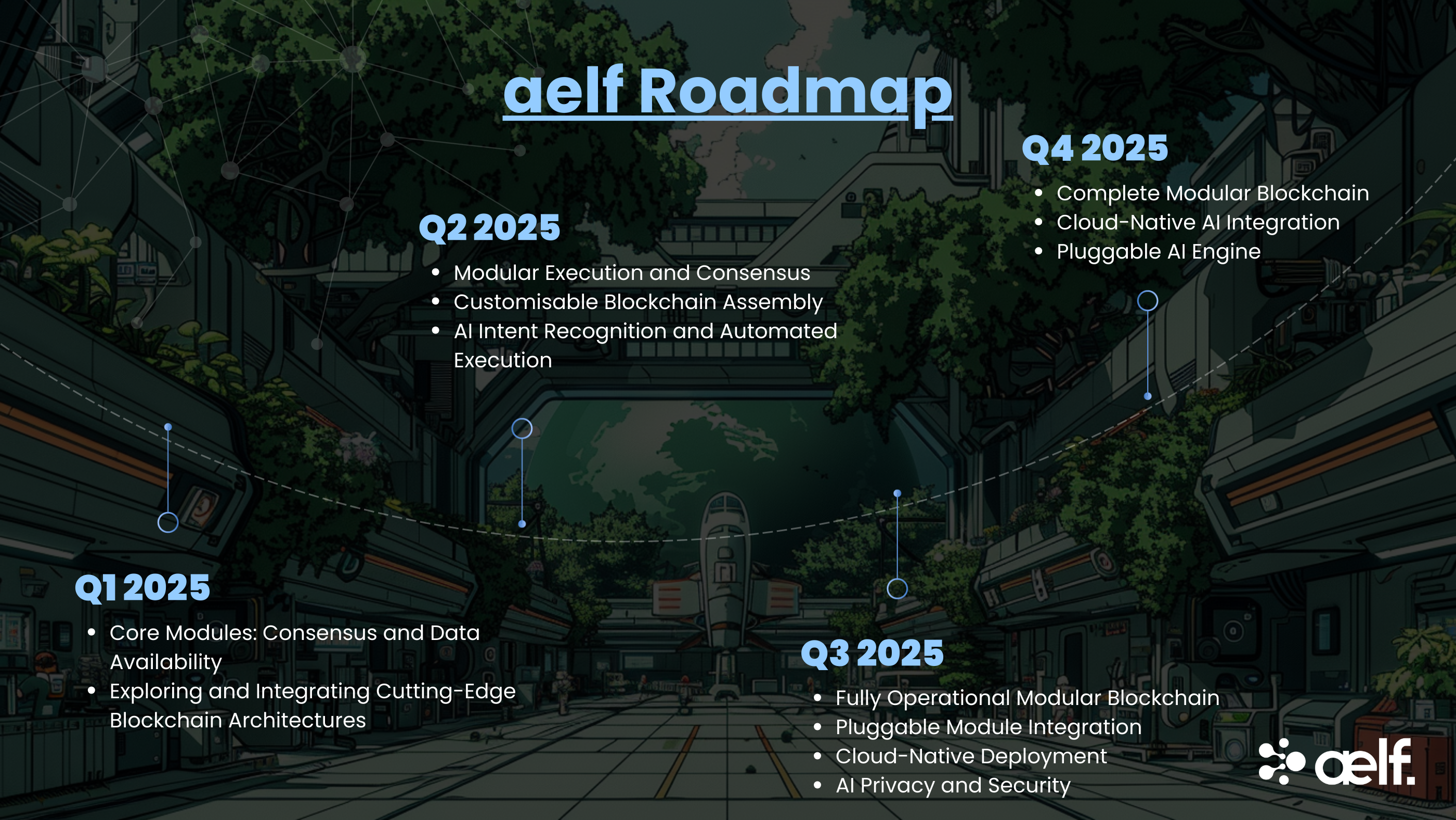
aelf 2025 Roadmap: Introduction
This roadmap outlines aelf's strategic advancements in core blockchain technology, focusing on modularity, distributed computing, and AI integration.
Q1 2025
Core Modules: Consensus and Data Availability
aelf will abstract the consensus and data availability functionalities into modular components. This allows flexibility for developers to either use default implementations or leverage standardised interfaces to build tailored solutions.
Exploring and Integrating Cutting-Edge Blockchain Architectures
aelf will actively incorporate advanced blockchain architectures, such as BlockDAG (this is a potential layer of technology to be explored) into its modular framework. These architectures offer innovative solutions to scalability and concurrency challenges often faced by traditional blockchain structures.
Q2 2025
Modular Execution and Consensus
Extend modularity to the execution and consensus layers, enabling developers to leverage default implementations or build custom solutions via standardised interfaces.
This enhances flexibility and future-proofs the blockchain for next-phase advancements in Web3 AI technology.
Customisable Blockchain Assembly
Proof-of-Concept (PoC) validation for dynamically loading custom module components at runtime, specified through configuration files.
This empowers developers to tailor the blockchain to specific use cases and experiment with novel configurations.
AI Intent Recognition and Automated Execution
Introduce an AI-powered layer that automates complex Web3 and crypto interactions.
By recognising user intents, the Web3 AI system can execute tasks like signing, contract calls, and fee settlements without manual intervention, improving user experience and efficiency.
Q3 2025
Fully Operational Modular Blockchain
Finalise core functionalities of execution, consensus, data availability, and settlement modules, including extensions, to achieve a comprehensive and operational blockchain.
Pluggable Module Integration
Enable the development and seamless integration of custom and extended modules into the modular blockchain architecture, further enhancing flexibility and customisation.
Cloud-Native Deployment
Deploy the modular blockchain on a cloud-native architecture, leveraging scalable and distributed computing resources to optimise performance and resource allocation.
AI Privacy and Security
Integrate privacy-enhancing technologies like zero-knowledge proofs (ZKP) and homomorphic encryption to ensure user data security and privacy, even with automated AI operations.
Q4 2025
Complete Modular Blockchain
Finalise development of all remaining modules, including governance, economic models, permissions, and security, to establish a fully functional and modular blockchain system.
Cloud-Native AI Integration
Enhance DevOps interoperability through AI integration. AI-powered monitoring and automated scaling within the cloud-native environment will also optimise efficiency and ensure high availability.
Pluggable AI Engine
Empower developers to integrate diverse AI models, such as LLMs and graph neural networks, for specialised scenarios like complex cross-chain interactions and smart contract logic suggestions.